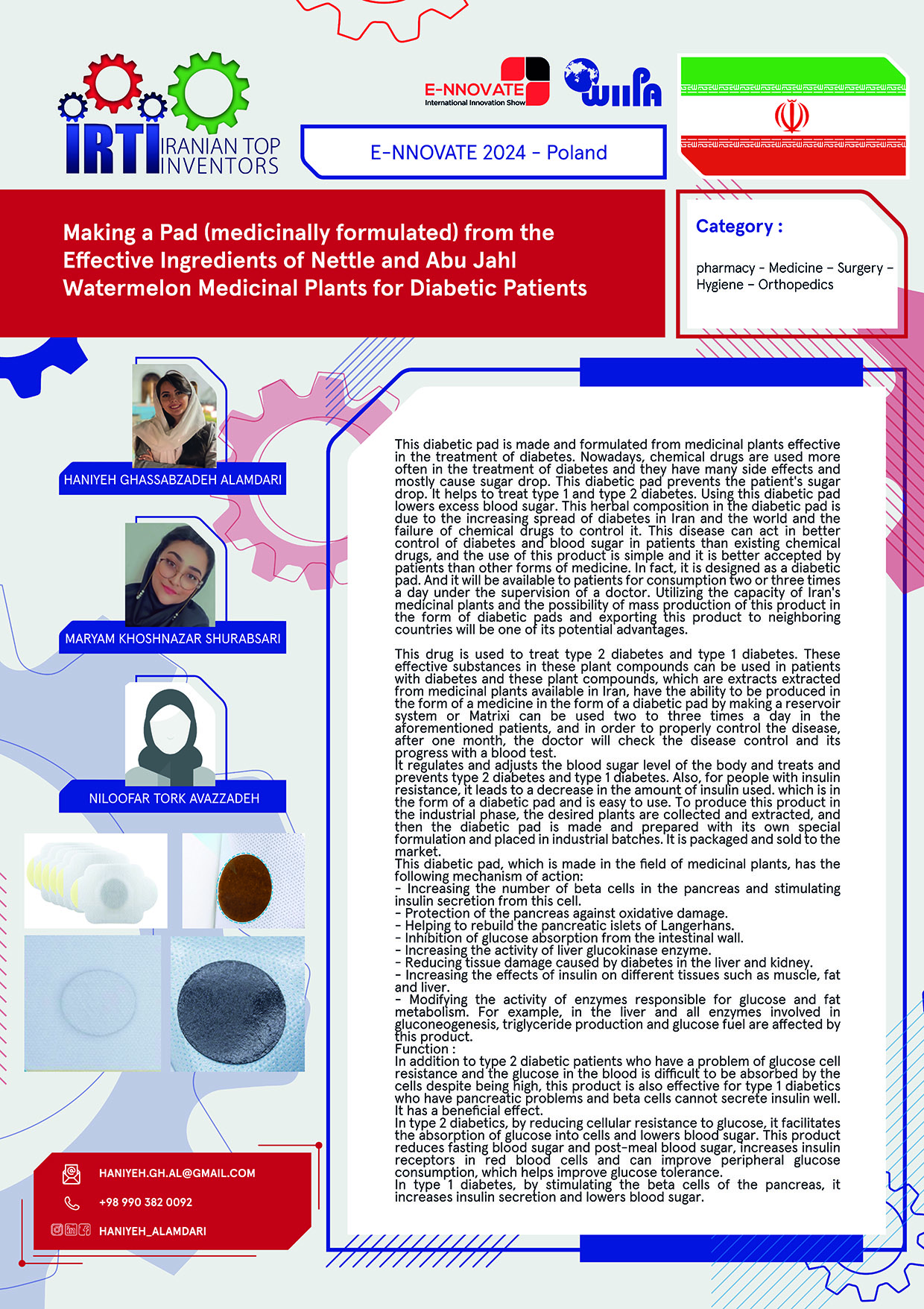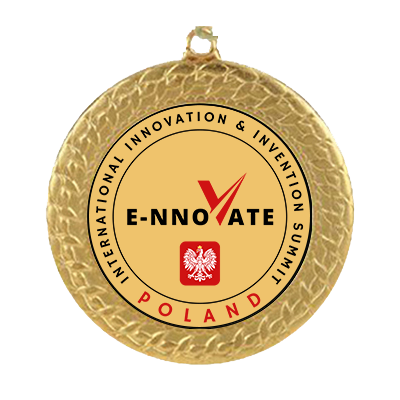
Making a Pad (medicinally formulated) from the Effective Ingredients of Nettle and Abu Jahl Watermelon Medicinal Plants for Diabetic Patients
Description:
Organisation: Iranian Top Inventors
Innovator(s): Haniyeh Ghassabzadeh Alamdari, Niloofar Tork Avazzadeh, Maryam Khoshnazar Shurabsari
Category: Pharma
Country: Iran

